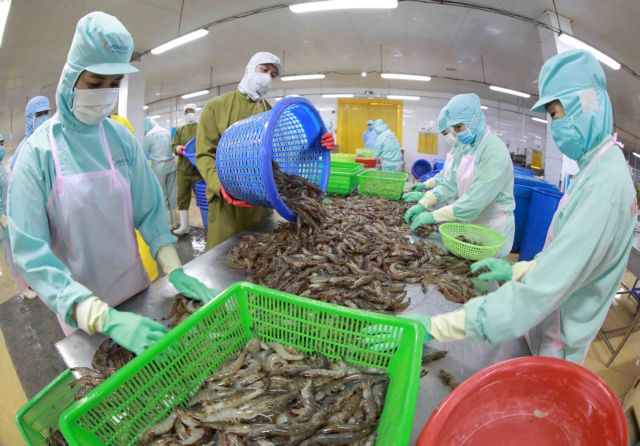This ambitious goal reflects the sector's resilience and potential, despite the challenges it faces in an increasingly competitive global market.

HÀ NỘI — Việt Nam's seafood export sector is poised for robust growth in 2025, with expectations of reaching an export value of US$11 billion.
This ambitious goal reflects the sector's resilience and potential despite the challenges it faces in an increasingly competitive global market.
Việt Nam has strong potential to boost seafood exports to key markets such as the US, China, ASEAN countries and the Middle East. These regions are seen as vital to achieving the sector's export targets.
In January 2025, Việt Nam's seafood exports surpassed $400 million, a remarkable 29 per cent increase compared to the same period in the previous year.
The strong start to the year's exports provides a positive outlook and sets a solid foundation for continued growth throughout 2025.
To meet this year's target, Việt Nam’s fishery industry is focusing on enhancing quality and efficiency rather than expanding farming areas.
Key strategies include improving deep processing to extend the value chain and leveraging by-products from aquatic raw materials.
This approach not only promises to boost the value of seafood products but also helps mitigate the environmental impacts of fishing and farming practices.
The country’s fishery sector still has significant room for growth, according to Phùng Đức Tiến, Deputy Minister of Agriculture and Rural Development.
Diversification of farmed species - such as eel, tilapia, seaweed and molluscs - will be a critical component of the sector's export strategy.
Additionally, Việt Nam plans to make more efficient use of its water systems, particularly reservoirs and river systems, while re-organising production through cooperatives and farming chains.
In 2025, the industry will also concentrate on improving the quality of aquatic breeds and ensuring strict control over antibiotic use in aquaculture.
According to Lê Thanh Hòa, deputy director of the Department of Quality, Processing, and Market Development, these measures are necessary for long-term sustainability and competitiveness.
Director of the Department of Fisheries Trần Đình Luân emphasised that since the end of 2024, Việt Nam’s seafood sector has seen a recovery in export markets, so companies have taken proactive steps to maximise production efficiency. This includes ensuring a steady supply of raw materials for export, such as tuna, squid and octopus - major high-value products.
In 2024, total shrimp exports reached an estimated US$3.9 billion, marking a 15 per cent increase from the previous year. This success is largely attributed to the development of value-added shrimp products, including whiteleg shrimp and black tiger shrimp.
Việt Nam’s pangasius export market has also shown impressive growth, especially in value-added products such as frozen fillets, pangasius skewers, skin snacks and pangasius balls. These products have fuelled Việt Nam's seafood export growth to the US.
Despite facing trade defence measures, the US remains one of the most important markets for Vietnamese seafood, particularly for shrimp and pangasius, also known as tra fish.
However, rising costs for feed, fuel and transportation are increasing production expenses, which could undermine the competitiveness of Vietnamese seafood in the global market, according to the Việt Nam Association of Seafood Exporters and Producers.
Việt Nam is currently the world's third largest seafood exporter, behind China and Norway. —VNS





